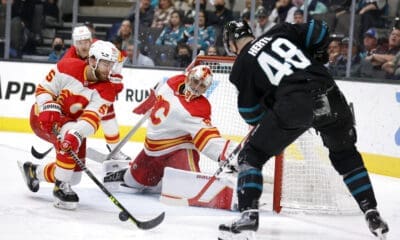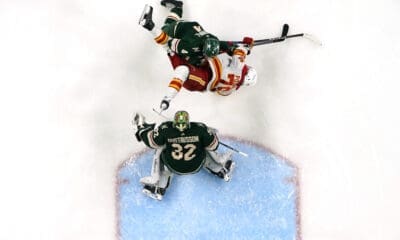Calgary Flames
The Flames Blueline Woes: Kris Russell
We're going to start off by examining the de-facto second pairing of Kris Russell. We'll examine the positives (brief) and the alarming negatives facing the Calgary Flames while utilizing him in the second pairing with Dennis Wideman.
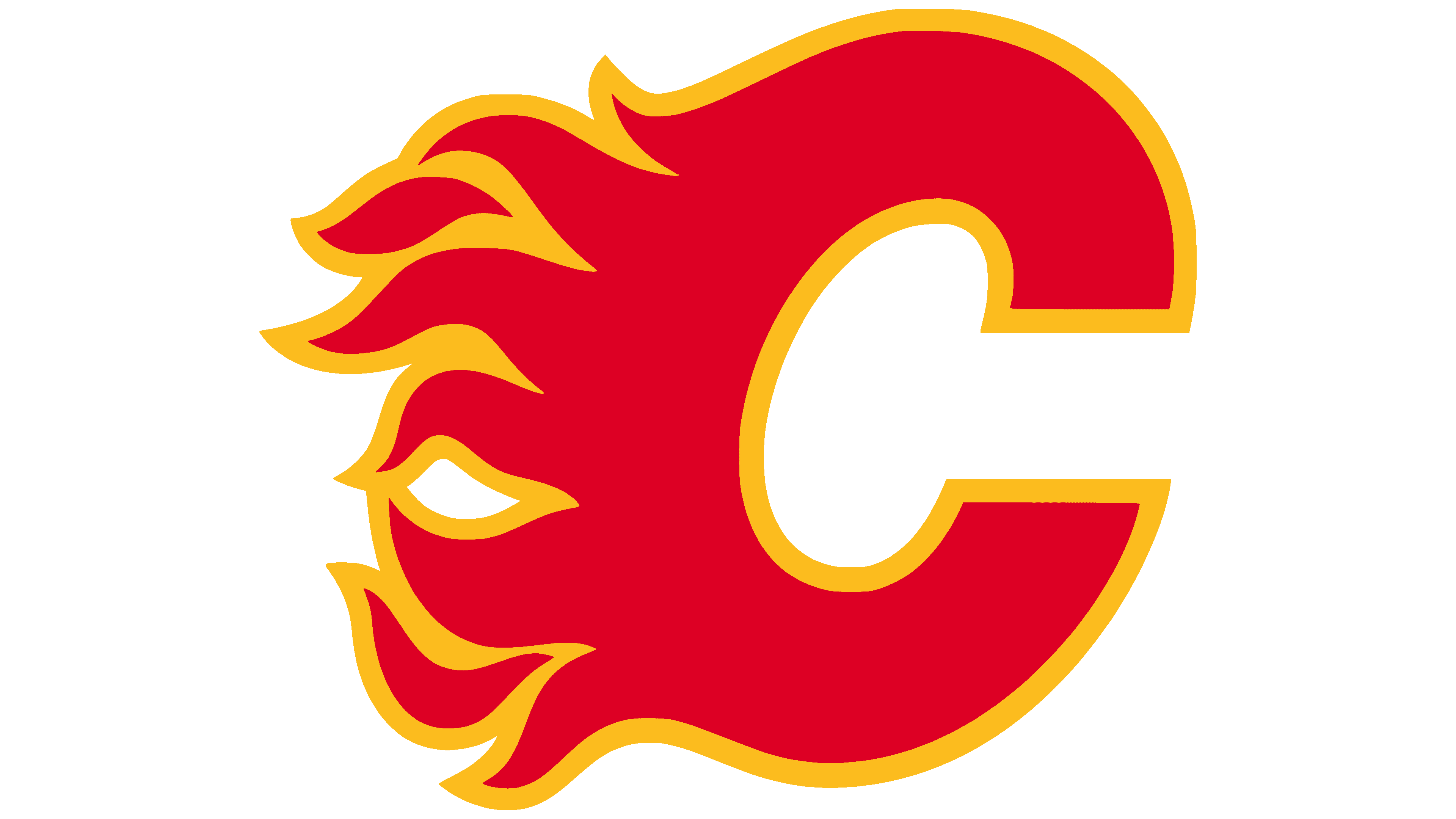
I loved Kris Russell last season, well before the time I learned how much of a drag he is on the team he plays for. He offers some value to the team but he's put into a role with a partner who often at times can't play defense for the life of them. Escaping their own zone is a task, gaining possession of the puck is a task, and generally a lot of bad things happen when they're on the ice.
That said, prior to the 8 game PDO based collapse, there was nary a word from Sportsnet or other outlets of substantial media power. Everyone was on and on over how Mak Giordano and TJ Brodie are going to be Norris finalists (they might). Dennis Wideman and Kris Russell, I mean wow; they were putting up huge points and solidifying this young, surging Calgary Flames team. Then you have the other crud rocks behind them.
Then it all stopped.
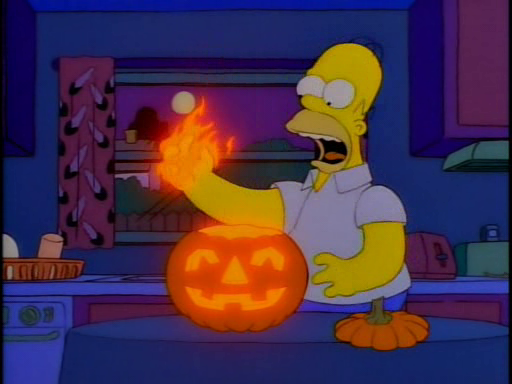
Though Mark Giordano and TJ Brodie were left unscathed (really they should be despite Brodie’s suicide pass to Stajan recently), much of the blame should fall on the second and third pairings. Brodie and Gio do enough for this team in their minutes on ice. They face the toughest competition, take the toughest starts, and they legitimately drive possession. They’re also suited for their roles.
The dilemma with Calgary now isn't their lack of centre depth; both on the roster, in the system, and in Adirondack. It's not goaltending due to organization depth…finally. It might be their RW but that's an entire different topic. No, the real issue is the blueline. It's one of the hardest positions to take care of at the draft table, trading, and in development. The necessity for a responsible and competent defensive core is the cornerstone of the recent Stanley Cup champions. It's the necessity of rebuilding franchises to address as well.
So what to make of Kris Russell and Dennis Wideman?
| Goals | Assists | Points | PPG | PPP | SH% | GP | Cap Hit | |
| Dennis Wideman | 10 | 12 | 22 | 4 | 9 | 12.5% | 39 | $5.25M |
| Kris Russell | 0 | 16 | 16 | 5 | 0.0% | 38 | $2.6M |
I've just taken the basic stats here from NHL.com and NHLNumbers (RIP CAPGEEK) to showcase these numbers for now. Wideman puts up points, we know. His best offensive season was with Boston in 08-09 when he registered 13 goals and 37 assists. In 666 games played, he has 87 goals and 229 assists for 316 points. If you care about plus/minus, he is a -69. It should be noted that 49 goals in his career came on the power play.
Russel meanwhile put up career numbers last season with 7 goals and 22 assists in 68 games played. His career has not been as consistent but in 470 GP, he has 30 goals and 110 assists for 140 points. Plus/minus if you care is -19. We all know plus/minus is a bullshit stat.
For now, let's focus on Russell. We'll tackle the enigma that is Dennis Wideman another day.
Alright, so offensively this season they're putting up pretty decent numbers — at least they were. It's slowed to a crawl overall for them for various reasons (on the analytics side too) and frankly Russell shooting 0% on 61 shots this season is a bit nuts. He had 109 shots last year and shot 6.4%!
Shot-blocking:
This is where they get so much attention/had so much attention on them prior to the recent struggles. Let's start with the shot blocking stuff because it gets so much attention and it drives me insane. Source: NHL.com + ESPN
| Rank | Team | Shots Blocked | Team ES CF% Rank | Shot Block Leader Rank (NHL) | Shot Block Leader |
| 1 | Calgary | 750 | 28th (44.20%) | 1st | Kris Russell (123 BS) |
| 2 | Buffalo | 721 | 30th (37.50%) | 2nd | Josh Gorges (105 BS) |
| 3 | Montreal | 678 | 24th (48.63%) | 20th | Andrei Markov (77 BS) |
| 4 | Toronto | 630 | 29th (44.02%) | T-15th with TJ Brodie | Dion Phaneuf (82 BS) |
| 5 | Anaheim | 616 | 17th (51.04%) | T-13th with Shea Weber | Sami Vatanen (83 BS) |
| 6 | NY Islanders | 615 | 6th (53.01%) | T-24th with Dan Girardi / Cody Franson | Calvin de Haan (76 BS) |
| 7 | Colorado | 611 | 27th (45.46%) | T-18th with Goligoski | Erik Johnson (78 BS) |
| 8 | Arizona | 598 | 19th (49.50%) | 10th | Zbynek Michalek (89 BS) |
| 9 | San Jose | 598 | 14th (51.21%) | T-38th with Alec Martinez | Justin Braun (68 BS) |
| 10 | Dallas | 592 | 16th (51.09%) | T-18th with Johnson | Alex Goligoski (78 BS) |
Notably a few things stand out. That being a bulk of the shot block leading teams are negative possession teams in terms of even strength CF%. It’s a basic principle to understand too: If you don’t have the puck, chances are you’re tying to gain possession, blocking a shot, hitting, etc. I mean you could break down further into different types of situations but realistically a large portion of these teams (6) that don’t have the puck often happen to be not possessing the puck lots.
Notably the least amount of shots blocked includes the following teams:
A lot of this doesn’t surprise me. So what’s with Kris Russell leading the league with a differential of +34 BS compared to 10th place Zybnek Michalek or Russell’s partner Dennis Wideman with 91 BS this season? Well it comes down to the team around them and their play first and foremost.
I’ve characterized their play at times in their own zone as handling a puck as a live grenade. Though the questionable calculation of giveaways by NHL.com is often underwhelming or grossly inflated; Calgary does rank 1st in giveaways this season with 438. Edmonton and San Jose trail behind at 432 and 427. Per SportingCharts.com, they have Wideman ranked 11th (40 total) overall and Russell ranked 23rd (34 total) overall in giveaways.
Then again you also see possession machines like Erik Karlsson ranking 1st overall individually, PK Subban, Brent Burns, TJ Brodie, Johnny Gaudreau, John Tavares, and even Taylor Hall. The difference being that those gentlemen are possession drivers for the most part. More and more emphasis over the last few years has considered and accepted that guys who typically drive possession might be more culpable to giving it up from time to time.
But when you’re negatively impacting possession and seeing huge issues with your possession stack up, it begins to be a problem. Especially for a team like Calgary that has issues generating shot attempts, shots on net, and sustainable offense. It’s costing them at times.
To close on this, stop glorifying the shot blocking of people. If they are leading the league in blocked shots, that means when they’re on the ice they don’t have possession of the puck often. The game is in a possession based era. The top teams in terms of possession usually end up winning the riches. Calgary won’t win much post-rebuild or during a rebuild if we can’t possess the puck.
Possession Woes:
The true problem plaguing the Flames in the second and third pairings is the issue of driving play. Calgary certainly has improved on their Fenwick front (shots missed + shots on net) but their struggles on the general Corsi front are a huge problem. Just the general issue with shot generation at all is going to be an issue for this season and probably much of next season.
Let’s start here, with a basic graph explaining zone start percentage on the X-Axis (bottom) and on the left, TOI % against of the competition (left). Blue = great!, Red = bad! Flesh tone = ehhh meh!

Obviously this post isn’t about the Brodano (or Brodidano) pairing or for next pairing we’ll discuss in Ladislav Smid with Deryk Engelland; and Raphael Diaz too. Though it should be mentioned that this makes me sad to look at.
The TL;DR of the graph is the following: We need help. That’s it. We need help. Tyler Wotherspoon isn’t ready for this. We need to make a trade at some point to remedy this problem. Developing players takes time, in fact too much time. You can’t rush prospects in a rebuild and doing so would just derail this more.
Making a move for a guy like Andrej Sekera out of Carolina for the right price helps. He is a better option than 5 gentlemen on this team. Actually, here is what he looks like in comparison to the others with his partner Justin Faulk:

Sekera on the second pairing would be a suitable option allowing Russell to slot into a natural bottom pairing role. Diaz, Engelland, or Wotherspoon could be options. Dennis Wideman is cautiously capable of a second pairing role but not really. Maybe with a better partner he can be better.
Heck even going after a guy like Cody Franson (depending on the price) could spruce on the roster blueline too, here is what he looks like in comparison to the others shown:
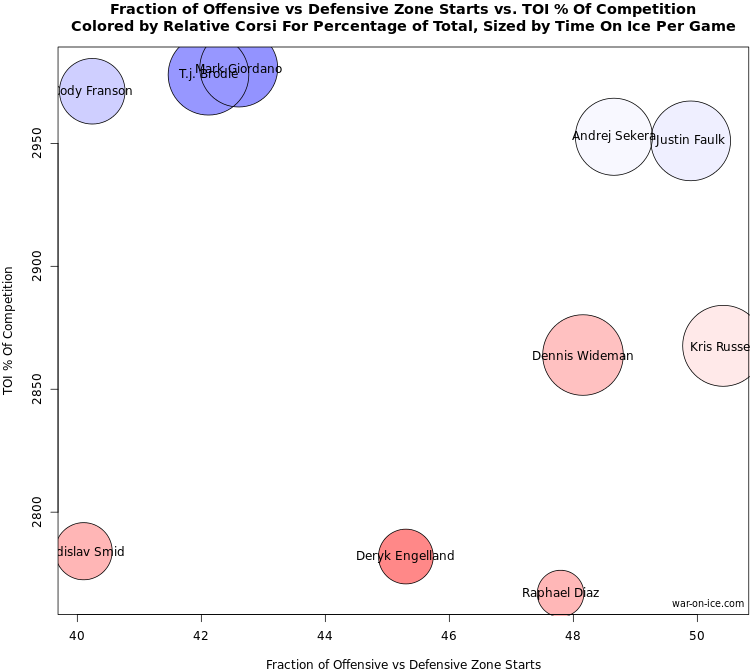
Visual aids are fun, right? Imagine a pairing of the following:
| Pairing 1 | Mark Giordano | TJ Brodie |
| Pairing 2 | Andrej Sekera | Cody Franson |
| Pairing 3 | Kris Russell | Deryk Engelland |
| Extras: | Tyler Wotherspoon (SOMEDAY) | Raphael Diaz |
Wideman is dealt somewhere in this scenario (50% retained salary) and Smid is found in a ditch somewhere between Edmonton and Calgary…
Now let’s move onto their individual stats and what exactly is the biggest flaws not mentioned so far: THE WOWYS!
A few notes before we dig into this:
Kris Russell’s WOWY for 2014 – 2015 (This thing is hella-wide so I included the full-res one here)
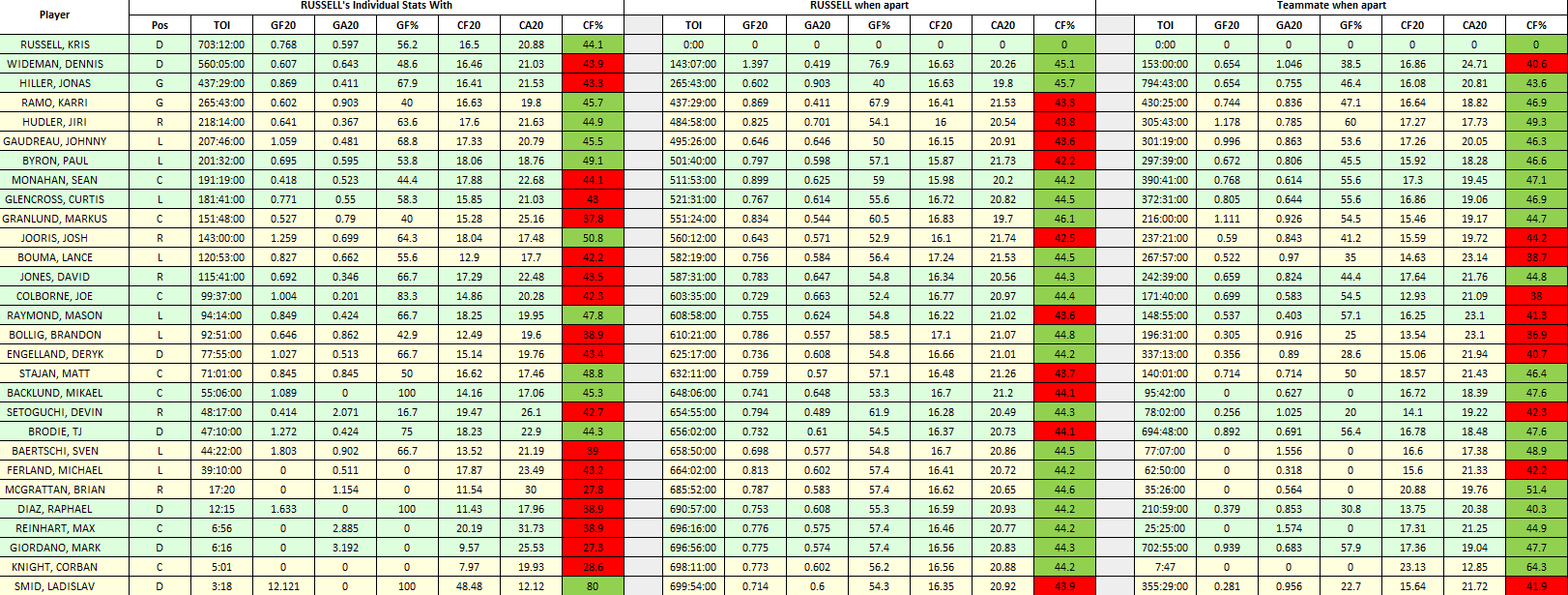
- Of the two, Russell is better away from Wideman. Though an extremely important factor is the forwards he, Dennis, and/or both of them are on with at the same time. Bollig, Bouma, and the sort are going to impact them heavily as you can see.
- Goalie corsi with Jonas Hiller and Karri Ramo doesn’t really matter here. GA/20, Shot attempts, etc. Those matter but we’re not examining their impact on goalies…yet.
- TOI sample size is incredibly crucial – though this data shown above does not include zone starts, please consider with a grain of salt that various scenarios will add into to this.
- You can see significant and small gains from Russell with players like Hudler, Gaudreau, Paul Byron, and Josh Jooris.
- Even on extremely limited sample sizes due to injuries, demotions, and just pure deployment you see guys like Mikael Backlund having a boost on his play overall.
Russell’s direct impact for the last two years can be see here, broken down courtesy of HockeyGoalieEh:
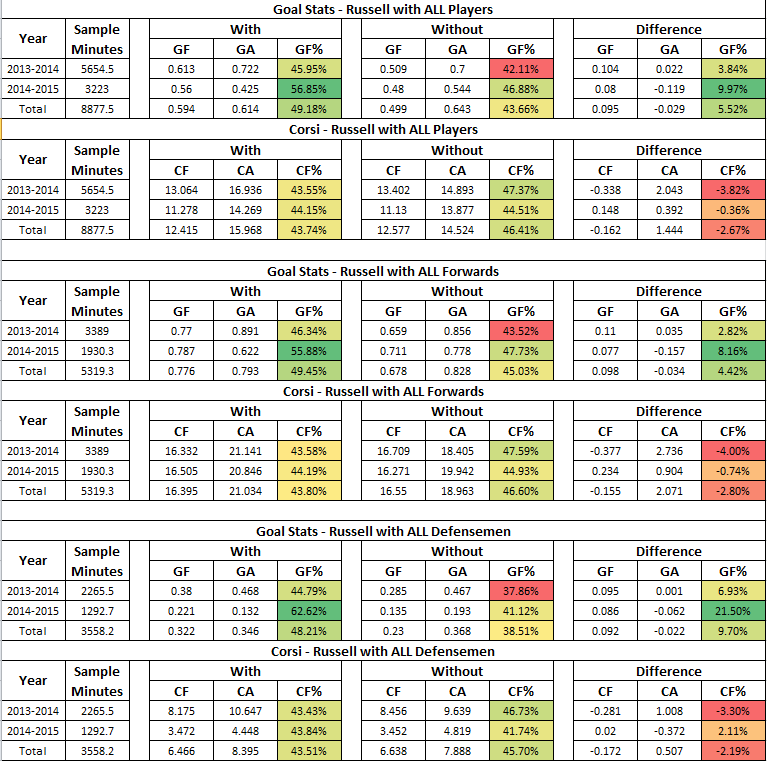
The first thing you’ll notice is HUGE goal differential boosts this year. Why? Sample size, different composition of teammates (who drive play versus not driving play), inflated PDO (remember Calgary’s luck did run out eventually), and unsustainable SH% that lead to goals.
The real concern that we need to keep in perspective is the drag on actual shot attempts that Russell is responsible for. Calgary being 28th in ES 5v5 shot attempts only shows how incredibly weak they are in this second year of the rebuild. Russell is and has been given every opportunity to contribute — yes that includes his often flashy speedy zone entries but how often do they legitimately contribute to sustained zone pressure? Minimally.
Closing Thoughts:
I like elements of Russell’s game – the flashy zone entries from time to time are incredibly fun to watch even if they don’t result in much. I like his speed and what he brings to a team who is slowly finding a way into carrying the puck into the zone rather than the dump and chase model. Under the right circumstances, with a proper partner; and in the right deployment he could contribute rather than hinder.
Continuing with the positives, I like his shot and it’s unfortunate luck that he hasn’t found the back of the net yet. That said, the best option for him is the 3rd pairing. Insulated and deployed for 14-15 minutes TOI with a bit of PP/PK time in there if needed. The chances of him actually being a top-4 aren’t going happen. Though his tenacity for sacrificing his body for a shot block is heralded, that can’t be his only calling card.
Up next we’ll cover Wideman. This is going to be a work in progress for examining the blueline. Hopefully by the end of the year, we’ll have another look back on Russell to see if this trend continues.
by Mike Pfeil

